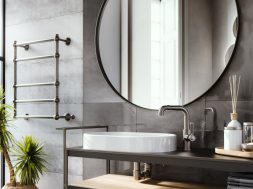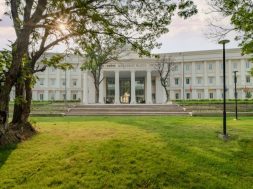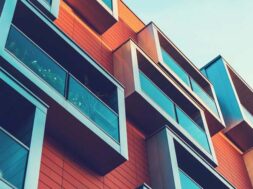“Sustainable design is the philosophy of designing a building that is in harmony with the natural habitat and resources surrounding the site”. Anshul Chawla, an environmental engineer working on environmental sustainability designs as a green building analyst explains the efficiency quotients of green buildings
International Energy Agency published a report estimating that existing buildings are responsible for more that 40 per cent of the world’s total primary energy consumption and for 24 per cent of global carbon dioxide emissions. This gives us a brief idea of the scale at which buildings contribute by its operations to environmental impact world over.
The concept of Green Buildings envision an innovative approach to save water, energy and material resources throughout a building’s life-cycle addressing design, construction, operation & maintenance and renovation to reduce or eliminate the adverse impact of buildings on the environment and inhabitants’ health.
By preferring Green Building over a conventional building we can help this planet earth and the people to preserve nature by retaining the external environment at the location of the building, preserving the environment and resources at places far away from the building and improving internal environment for the occupants.
Objectives of Green Building
Sustainability may be defined as meeting the needs of present generations without compromising the ability of future generations to meet their needs. The concept of sustainable development is part of the proactive efforts and desire for more energy efficient and environmentally friendly construction practices. In recent times the green building drive has been fueled by energy crisis and the environment pollution concerns across the globe. Modern sustainability initiatives call for an integrated and synergistic approach to both new construction and in the retrofitting of an existing structure.
Unlike common perception, beyond environmental benefits, green buildings offer economic and social benefits. It combines many practices and techniques to reduce and eventually eliminate the impacts of new buildings on the environment and human health.
Sustainable design is the philosophy of designing a building that is in harmony with the natural habitat and resources surrounding the site. The foundation of green building philosophy rest on Climate responsive design, energy efficiency, water efficiency, sustainable materials and optimum resource utilization, indoor environmental quality enhancement, operations and maintenance optimization, and waste reduction. The synergy established between these principles and modern technologies works together to produce a collective effect for a better tomorrow.
Climate Responsive Design
The intent of sustainable design is to eliminate negative environmental impact completely through intelligent design during the construction as well as life cycle of the building. The conceptualization and design stage acts like a foundation for any construction and plays a crucial role in a project life cycle due to its impact on cost and performance. Thus taking into account the environmental and social aspects during planning becomes imperative for an eco-design.
Buildings are individualistic structures, designed on the basis of usage requirements and site constraints. Building structure involves various components and massive amount of materials. Green building components and systems consume lesser energy compared to similar traditional buildings. Building orientation and building zoning & design contribute majorly to climate responsive building envelope. Increase in the efficiency of the building envelope can also be attributed to high-efficiency windows (low e-value) and insulation (low u-value) in walls, ceilings, and floors. Appropriate building design minimizes solar gain in summers whereas maximizes solar gain in winters; this approach is termed as Passive solar building design. In addition, effective window placement augments natural daylighting in the building reducing the need for artificial lighting during the day reducing energy consumption.
The design emphasizes on suitable building siting, natural resource optimization in building design, material and technology selection, rainwater harvesting, and on-site waste management. The landscaping and the exterior design in a green building shall be in such a way that it complements the building design, the light trespass is eliminated and local species of plants are grown.
Energy Efficiency
Energy efficiency can be achieved during design stage based on selection of technology and in operation stage based on monitoring, control and scheduling. At design stage, technology promoting energy efficiency measures can be implemented such as VRF’s, economizers, heat recovery systems, absorption refrigeration among others as applicable. During Building operation, building management system controls and optimizes the operation of building systems resulting in energy conservation. A Building Management System (BMS) is a computer-based control system installed in buildings that controls and monitors the building’s mechanical and electrical equipment such as ventilation, lighting, power, fire, and security systems.
Energy efficient lighting systems and appliances reduce the energy load which is further enhanced by use of renewable energy systems like solar water heating. Other advanced systems like hot water heat pump, heat recovery ventilation systems, onsite generation of renewable energy through solar PV systems, wind power, or biomass can significantly reduce the environmental impact of the building. Although these systems have a cost implication associated with them.
Continuous energy monitoring also plays an important role in understanding the energy usage pattern and further minimize the unnecessary or unaccounted energy consumption after the commissioning of the building.
Water Efficiency
Water conservation measures planned in a sustainable building design strive to reduce water consumption and promote reuse of water by waste water recycling. Reduction in expected water consumption directly reduces volume of waste-water handled and design size of STP facility thus resulting in direct savings of water and electricity. Facilities can increase their dependence on water that is collected, used and treated on-site through rainwater harvesting and STP plants. Rain falling over the whole area of the complex shall be harvested either to replenish the ground water table or to be utilized in serving the building.
Techniques such as using permeable pathways instead of conventional concrete and storm water storage are also used to enhance replenishment of ground water. The conservation of water can be extended to building life-cycle by designing for dual plumbing that uses recycled water in toilet flushing, and also by using STP treated water for irrigation, landscaping and feeding the cooling towers. Waste-water may be minimized by utilizing water conserving fixtures such as low flowrate dual flush toilets and low flow or sensor based water fixtures.
Buildings in dry climates are often encouraged to implement xeriscaping or native/adapted landscaping to reduce outdoor water usage. As part of water management initiatives, water consumption monitoring can help track the water consumption based on category of water usage and assist in making the process efficient.
Materials Efficiency
A typical building construction uses cement, sand, steel, stones, bricks, and a lot of finishing materials. These materials are quarried or procured far away from the location of the buildings. Statistics suggest that building materials are responsible for 5-20 per cent of the greenhouse gasses emitted by a building during its lifetime based on various parameters.
As far as possible, green buildings shall use the products that are non-toxic, reusable, renewable, and/or recyclable. Locally manufactured products and building materials are preferred so that the collective material environment of the region remains balanced and also to minimize the fuel consumption and related cost incurred in the transportation of materials.
Green building materials include rapidly renewable materials like bamboo and straw, certified wood from sustainably managed forests, recycled glass, recycled metal, and other products that are non-toxic, reusable, and/or recyclable. Using recycled industrial goods, such as coal combustion products from thermal power plants, gypsum and demolition debris in construction projects reduces the pressure on virgin materials.
Material efficiency and resource utilization can also be optimized by off-site manufacturing of building elements. Benefits of off-site manufacturing include minimizing waste, maximizing recycling, high quality elements, better EHS management, and improved on-site working conditions.
The embodied energy is defined as the commercial energy consumed by a product for its entire lifecycle. This lifecycle includes raw material extraction, transport, manufacture, assembly, installation, disassembly, deconstruction and/or decomposition. Materials should be purchased not just based on initial cost but its embodied energy and life cycle cost and performance.
Moreover Cradle to Cradle Design approach (a holistic economic, industrial and social framework that seeks to create systems that are not just efficient but essentially waste free) guides the way to the sustainable industrial, building material and construction industries in the coming times.
Indoor Environmental Quality Enhancement
Humans spend most of their time inside the buildings. The indoor environmental quality (IEQ) is important for comfort, well-being, and productivity of building occupants. IEQ addresses indoor air quality, thermal quality, and lighting quality.
Indoor Air Quality seeks to reduce volatile organic compounds, or VOC’s. Effect of VOC’s can be felt long after the building gets operational. Many building materials and cleaning/maintenance products emit toxic gases, such as VOC’s and formaldehyde. These gases can have a detrimental impact on occupants’ health and productivity as well. During the design and construction process choosing construction materials and interior finish products with zero or low emissions improves IAQ.
Buildings rely on a properly designed HVAC system to provide adequate ventilation and air filtration as well as isolate operations such as kitchens, smoking areas etc. from other occupancies. Personal temperature and airflow control over the HVAC system coupled with a properly designed building envelope aids in increasing a building’s thermal quality. A cautious integration of natural and artificial light sources improves on the lighting quality of a structure. Providing individual lighting control also enhances the overall experience of the occupants.
Waste Reduction
Green architecture also advocates reduction of wastage of energy, water and materials used during construction phase. One goal is to reduce the amount of material going to landfills. Waste is generated from construction and demolition processes, and material/product manufacturing. Sustainable architecture focuses on the on-site waste management, incorporating things such as grey water systems for use on garden beds, on-site food waste composting and off-site recycling. Well-designed buildings also help reduce the amount of waste generated by the occupants as well, by providing on-site solutions such as compost bins or multiple bins to reduce matter going to landfills.
Operations and Maintenance Optimization
Appropriate operations and maintenance (O&M) of the project’s planning and development process help retain the green features of the project. Major costs of running a building include Energy and Operation & Maintenance. The energy efficiency measures introduced during the design phase can only remain productive if the building is operated responsibly and maintained properly. Appropriate scheduling of processes and continuous monitoring and control of operations ensures better system performance and lower running costs.
Cost and Payoff
The most debatable issue about constructing environmentally friendly buildings is the price. Photo-voltaics, new appliances, and modern technologies tend to cost more money. However, green buildings may not necessarily cost more than similar traditional buildings as commonly believed. This depends on project and various other inter-related parameters such as climatic zone of site, site location, regional material availability to name a few. In some cases Green buildings have cost less than the regular building. It becomes imperative to understand and appreciate the difference between up-front cost vs. life-cycle cost. The financial savings come from more efficient use of utilities which result in decreased energy bills. Also, higher employee productivity can be factored into savings and cost deductions. Operating costs decrease 13.6 per cent for new construction and 8.5 per cent for existing building projects.
Cookie Consent
We use cookies to personalize your experience. By continuing to visit this website you agree to our Terms & Conditions, Privacy Policy and Cookie Policy.









